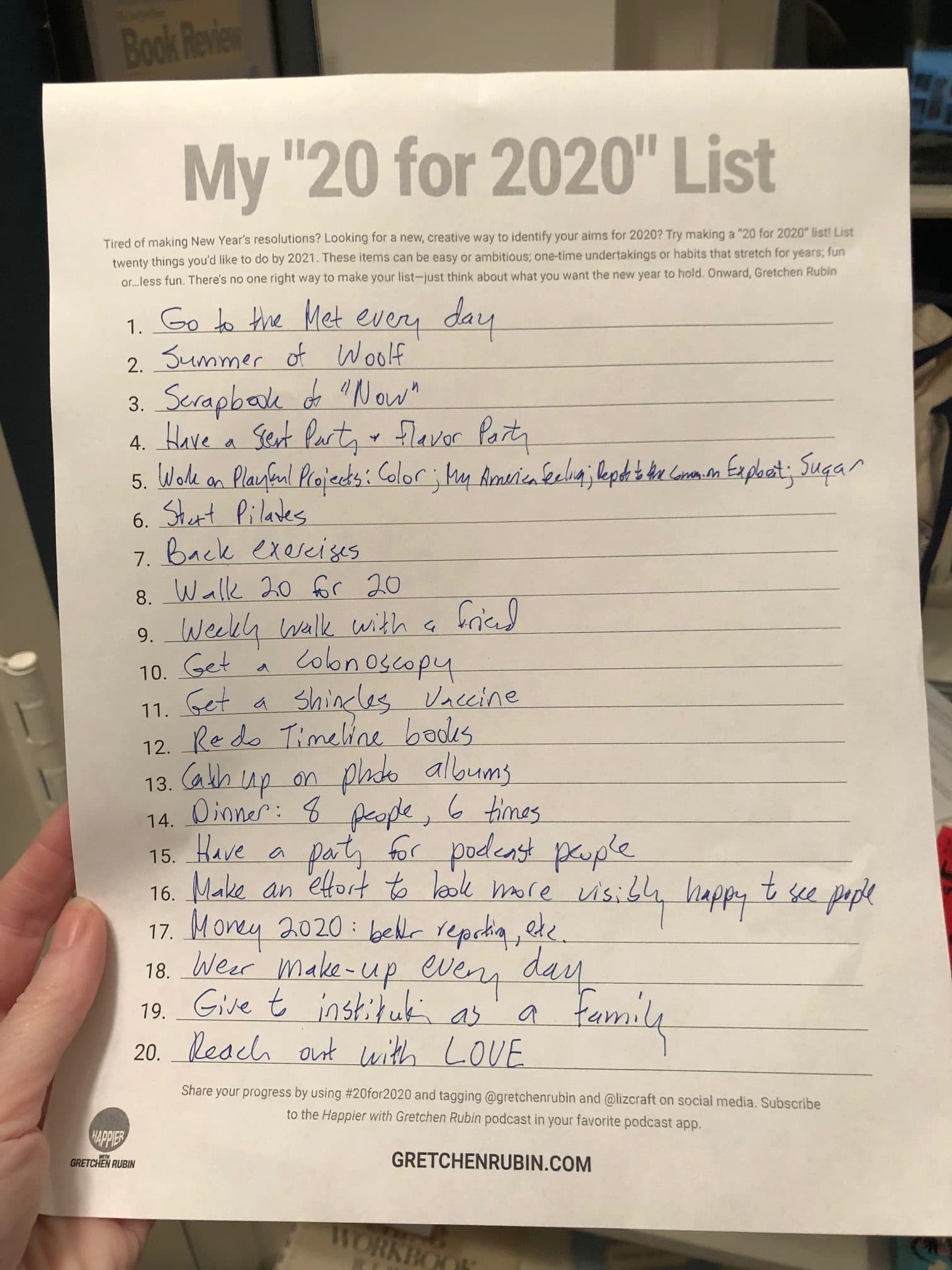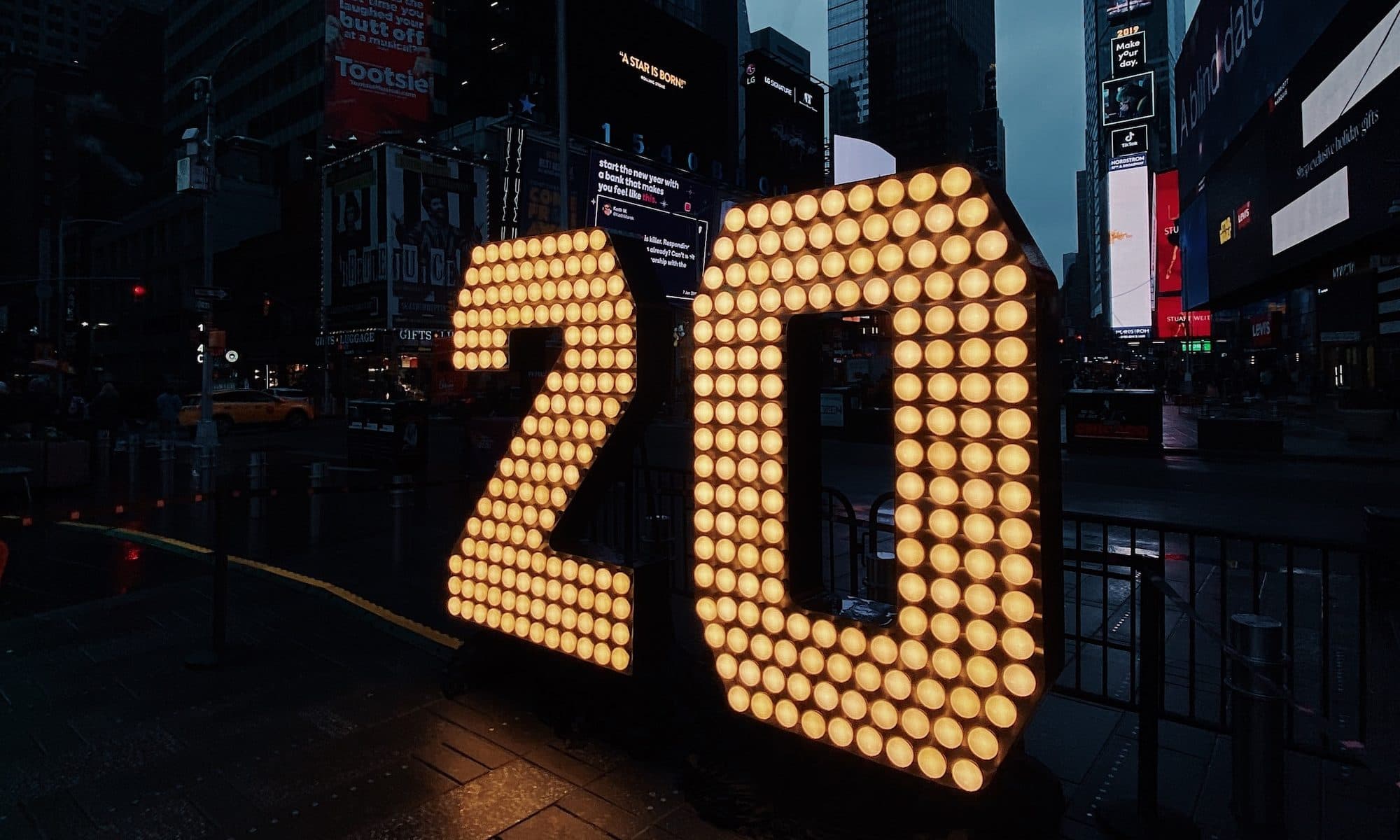Elizabeth and I love the exercise of making a “20 for 20” list. This is the third year we’ve tried this approach. In episode 149, we talk about our “18 for 2018” lists and in episode 203, we discussed our “19 for 2019” lists.
Now, why make a “20 for 2020” list at all?
Research shows that people who construct their goals in concrete terms are 50 percent more likely to feel confident they will attain their goals and 32 percent more likely to feel in control of their lives.
For some reason, we’ve found—and listeners say the same is true for them—that there’s something fresh and fun about making a 20 for 2020 list. Some people (like me) enjoy New Year’s resolutions, but many people (like Elizabeth) have bad associations with them.
Somehow, this approach makes it more pleasant to think about what we want for the new year—it feels more hopeful and helpful.
People have done many creative things with their lists. Some people:
- make a list of 20 items that all involve the number 20, like “Read 20 books,” or, “Visit 20 new restaurants”
- do a beautiful presentation of their list
- organize their lists into themes, such as “Adventure,” “Family,” “Career”
- have one theme for the entire list, such as “Health”—this theme might tie into a one-word theme for the year
- make a “ta-da” list to remind them of everything they’ve already done
- allow for evolution, by making a list of thirty items so that ten can be dropped, or making item #20 something like “Replace one item on the list with something I’d rather do”
- make a list of only fun, enjoyable things
- make a list of 10 stretch goals and 20 easy goals
- make a list to tackle with another person or as a family

As I’ve studied happiness and habits, I’m very struck by how the same activity can be much more appealing—or not—depending on how we frame it, the vocabulary we use, and how it suits our individual nature, values, and preferences.
Would you rather “practice piano” or “play piano?” Would you rather “Turn out the light earlier” or “Get more restful sleep?” Would you rather “Give up sugar” or “Quit sugar” or “Cook for myself?”
Twenty might seem like an arbitrary number (Questioners!), but it feels like a fun approach to the year—especially given that this year is double 20s.
This approach may not work as well in 2089! But 20 seems like a manageable number, long enough to allow for variety and a good mix, but not so long that it can’t be printed on a single piece of paper.
It would be fun to cross every item off the list, but neither Elizabeth nor I have managed to do that yet. The key question is: Does making this list help us to be happier, healthier, more productive, or more creative by the year’s end?
People’s overwhelming enthusiasm for this approach—and our own experiences—have convinced us that yes, this is a good way to make a year better.
Have you made a list of your “20 for 2020?” I love to see people’s lists—it’s fascinating to see what people do with their list—so if you’re so inclined, post it to #20for2020. We can get good ideas and encouragement for each other. (Elizabeth and I have both cribbed items for ourselves off other people’s lists.)
Sharing lists can be a great ice-breaking exercise. People’s lists reveal a lot about interests, values, and aspirations—it’s an interesting glimpse into someone’s personality, but it’s not so intimate that it feels inappropriate.
If you’d like a sheet where you can write your list neatly, download yours here.
Onward in 2020!




